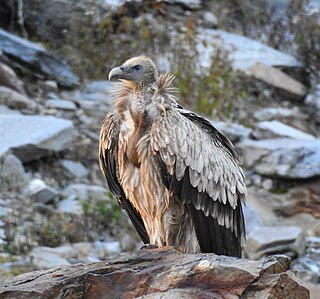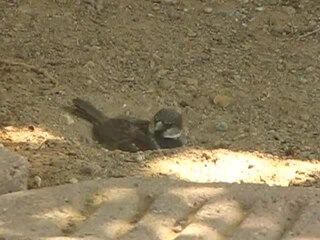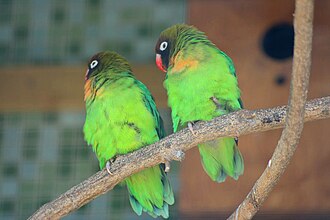
Ethology is the scientific study of animal behaviour, usually with a focus on behaviour under natural conditions, and viewing behaviour as an evolutionarily adaptive trait. Behaviourism as a term also describes the scientific and objective study of animal behaviour, usually referring to measured responses to stimuli or to trained behavioural responses in a laboratory context, without a particular emphasis on evolutionary adaptivity. Throughout history, different naturalists have studied aspects of animal behaviour. Ethology has its scientific roots in the work of Charles Darwin (1809–1882) and of American and German ornithologists of the late 19th and early 20th century, including Charles O. Whitman, Oskar Heinroth (1871–1945), and Wallace Craig. The modern discipline of ethology is generally considered to have begun during the 1930s with the work of Dutch biologist Nikolaas Tinbergen (1907–1988) and of Austrian biologists Konrad Lorenz and Karl von Frisch (1886–1982), the three recipients of the 1973 Nobel Prize in Physiology or Medicine. Ethology combines laboratory and field science, with a strong relation to some other disciplines such as neuroanatomy, ecology, and evolutionary biology. Ethologists typically show interest in a behavioural process rather than in a particular animal group, and often study one type of behaviour, such as aggression, in a number of unrelated species.
The dawn chorus occurs when birds sing at the start of a new day. In temperate countries this is most noticeable in spring when the birds are either defending a breeding territory, trying to attract a mate, or calling in the flock. In a given location, it is common for different species to do their dawn singing at different times. In a study of the Ecuadorian forest, it was determined that birds perching higher in the trees and birds with larger eyes tend to pipe up first. These correlations may be caused by the fact that both would also correlate with the amount of light perceived by the bird.

The Himalayan vulture or Himalayan griffon vulture is an Old World vulture native to the Himalayas and the adjoining Tibetan Plateau. It is one of the two largest Old World vultures and true raptors. It is listed as Near Threatened on the IUCN Red List.

Debeaking, beak trimming, or beak conditioning is the partial removal of the beak of poultry, especially layer hens and turkeys although it may also be performed on quail and ducks. Most commonly, the beak is shortened permanently, although regrowth can occur. The trimmed lower beak is somewhat longer than the upper beak. A similar but separate practice, usually performed by an avian veterinarian or an experienced birdkeeper, involves clipping, filing or sanding the beaks of captive birds for health purposes – in order to correct or temporarily alleviate overgrowths or deformities and better allow the bird to go about its normal feeding and preening activities. Amongst raptor-keepers, this practice is commonly known as "coping".

The red junglefowl is a tropical bird in the family Phasianidae. It ranges across much of Southeast Asia and parts of South Asia. It was formerly known as the Bankiva or Bankiva Fowl. It is the species that encompasses the chicken ; the grey junglefowl, Sri Lankan junglefowl and green junglefowl have also contributed genetic material to the gene pool of the chicken. While chickens are also classified as red junglefowl, the term often only refers to wild subspecies in common parlance.

John Hurrell Crook was a British ethologist who filled a pivotal role in British primatology.

The tawny eagle is a large bird of prey. Like all eagles, it belongs to the family Accipitridae. Its heavily feathered legs illustrate it to be a member of the subfamily Aquilinae, also known as "booted eagles". Tawny eagles have an extensive but discontinuous breeding range that constitutes much of the African continent as well as the Indian subcontinent, with rare residency occurring in the southern Middle East. Throughout its range, it favours open dry habitats such as semideserts, deserts steppes, or savanna plains. Despite its preference for areas of aridity, the species seldom occurs in areas where trees are entirely absent. It is a resident breeder which lays one to three eggs in a stick nest mostly commonly in the crown of a tree. The tawny eagle is perhaps the most highly opportunistic of all of its taxonomic clan, and often scavenges on carrion or engages in kleptoparasitism towards other carnivorous animals but is also a bold and active predator, often of relatively large and diverse prey. It is estimated that tawny eagles can reach the age of 16 years old. Nonetheless, precipitous declines have been detected throughout the tawny eagle's range. Numerous factors, particularly loss of nesting habitat due to logging and global warming, as well as persecution and other anthropogenic mortality are driving the once numerous tawny eagle perhaps to the brink of extinction.

A herd is a social group of certain animals of the same species, either wild or domestic. The form of collective animal behavior associated with this is called herding.

In biology, a dominance hierarchy is a type of social hierarchy that arises when members of animal social groups interact, creating a ranking system. A dominant higher-ranking individual is sometimes called an alpha, and the submissive lower-ranking individual a beta. Different types of interactions can result in dominance depending on the species, including ritualized displays of aggression or direct physical violence. In social living groups, members are likely to compete for access to limited resources and mating opportunities. Rather than fighting each time they meet, relative rank is established between individuals of the same sex, with higher-ranking individuals often gaining more access to resources and mates. Based on repetitive interactions, a social order is created that is subject to change each time a dominant animal is challenged by a subordinate one.
An ethogram is a catalogue or inventory of behaviours or actions exhibited by an animal used in ethology.

Mobbing in animals is an antipredator adaptation in which individuals of prey species mob a predator by cooperatively attacking or harassing it, usually to protect their offspring. A simple definition of mobbing is an assemblage of individuals around a potentially dangerous predator. This is most frequently seen in birds, though it is also known to occur in many other animals such as the meerkat and some bovines. While mobbing has evolved independently in many species, it only tends to be present in those whose young are frequently preyed upon. This behavior may complement cryptic adaptations in the offspring themselves, such as camouflage and hiding. Mobbing calls may be used to summon nearby individuals to cooperate in the attack.

Dust bathing is an animal behavior characterized by rolling or moving around in dust, dry earth or sand, with the likely purpose of removing parasites from fur, feathers or skin. Dust bathing is a maintenance behavior performed by a wide range of mammalian and avian species. For some animals, dust baths are necessary to maintain healthy feathers, skin, or fur, similar to bathing in water or wallowing in mud. In some mammals, dust bathing may be a way of transmitting chemical signals to the ground which marks an individual's territory.

Feather pecking is a behavioural problem that occurs most frequently amongst domestic hens reared for egg production, although it does occur in other poultry such as pheasants, turkeys, ducks, broiler chickens and is sometimes seen in farmed ostriches. Feather pecking occurs when one bird repeatedly pecks at the feathers of another. The levels of severity may be recognized as mild and severe. Gentle feather pecking is considered to be a normal investigatory behaviour where the feathers of the recipient are hardly disturbed and therefore does not represent a problem. In severe feather pecking, however, the feathers of the recipient are grasped, pulled at and sometimes removed. This is painful for the receiving bird and can lead to trauma of the skin or bleeding, which in turn can lead to cannibalism and death.

Abnormal behavior of birds in captivity has been found to occur among both domesticated and wild birds. Abnormal behavior can be defined in several ways. Statistically, 'abnormal' is when the occurrence, frequency or intensity of a behaviour varies statistically significantly, either more or less, from the normal value. This means that theoretically, almost any behaviour could become 'abnormal' in an individual. Less formally, 'abnormal' includes any activity judged to be outside the normal behaviour pattern for captive birds of that particular class or age. For example, running rather than flying may be a normal behaviour and regularly observed in one species, however, in another species it might be normal but becomes 'abnormal' if it reaches a high frequency, or in another species it is rarely observed and any incidence is considered 'abnormal'. This article does not include 'one-off' behaviours performed by individual birds that might be considered abnormal for that individual, unless these are performed repeatedly by other individuals in the species and are recognised as part of the ethogram of that species.
Toe pecking, an abnormal behaviour of birds in captivity, occurs when one bird pecks the toes of another using its beak. This behaviour has been reported in hens and ostriches. Studies have shown that hens exposed to toe pecking have significantly enlarged adrenal glands, indicating increased physiological stress. Hens exposed to toe pecking will step off a raised platform more quickly than control hens, possibly suggesting a heightened fear of elevation. They have also been reported to show depressive behaviour when afflicted by toe-pecking. The act of toe pecking leads to open wounds which are viable for infection and disease to develop. In severe forms, toe pecking can be classified as a cannibalistic behaviour and has been reported as a cause of mortality.

Cannibalism in poultry is the act of one individual of a poultry species consuming all or part of another individual of the same species as food. It commonly occurs in flocks of domestic hens reared for egg production, although it can also occur in domestic turkeys, pheasants and other poultry species. Poultry create a social order of dominance known as pecking order. When pressure occurs within the flock, pecking can increase in aggression and escalate to cannibalism. Cannibalism can occur as a consequence of feather pecking which has caused denuded areas and bleeding on a bird's skin. Cannibalism can cause large mortality rates within the flock and large decreases in production due to the stress it causes. Vent pecking, sometimes called 'cloacal cannibalism', is considered to be a separate form of cannibalistic pecking as this occurs in well-feathered birds and only the cloaca is targeted. There are several causes that can lead to cannibalism such as: light and overheating, crowd size, nutrition, injury/death, genetics and learned behaviour. Research has been conducted to attempt to understand why poultry engage in this behaviour, as it is not totally understood. There are known methods of control to reduce cannibalism such as crowd size control, beak trimming, light manipulation, perches, selective genetics and eyewear.

Comfort behaviours in animals are activities that help maintain the pelage, feathers, integuement or musculoskeletal system and increase the physical comfort of the animal.

The information centre hypothesis (ICH) is a theory that states bird species live in communal roosts primarily for the advantage of gaining information from others in the community regarding the location of unevenly distributed food resources. This hypothesis was first proposed by Peter Ward and Israeli biologist Amotz Zahavi (1973). They stated that birds join assemblages in order to gain information about food resources and increase foraging efficiency. Using this strategy would allow unsuccessful birds to return to the population and gain information, often by observing behavioural differences in successful birds. Following the exchange of knowledge, the unsuccessful individuals then follow those deemed successful back to the resource location.

Ethology: International Journal of Behavioural Biology is a monthly peer-reviewed scientific journal published by John Wiley & Sons. The journal is associated with the Ethologische Gesellschaft e.V. and the current editor-in-chief is Wolfgang Goymann. Previous editors-in-chief of Ethology were Wolfgang Wickler, Michael Taborsky and Jutta Schneider with Susan Foster.
















